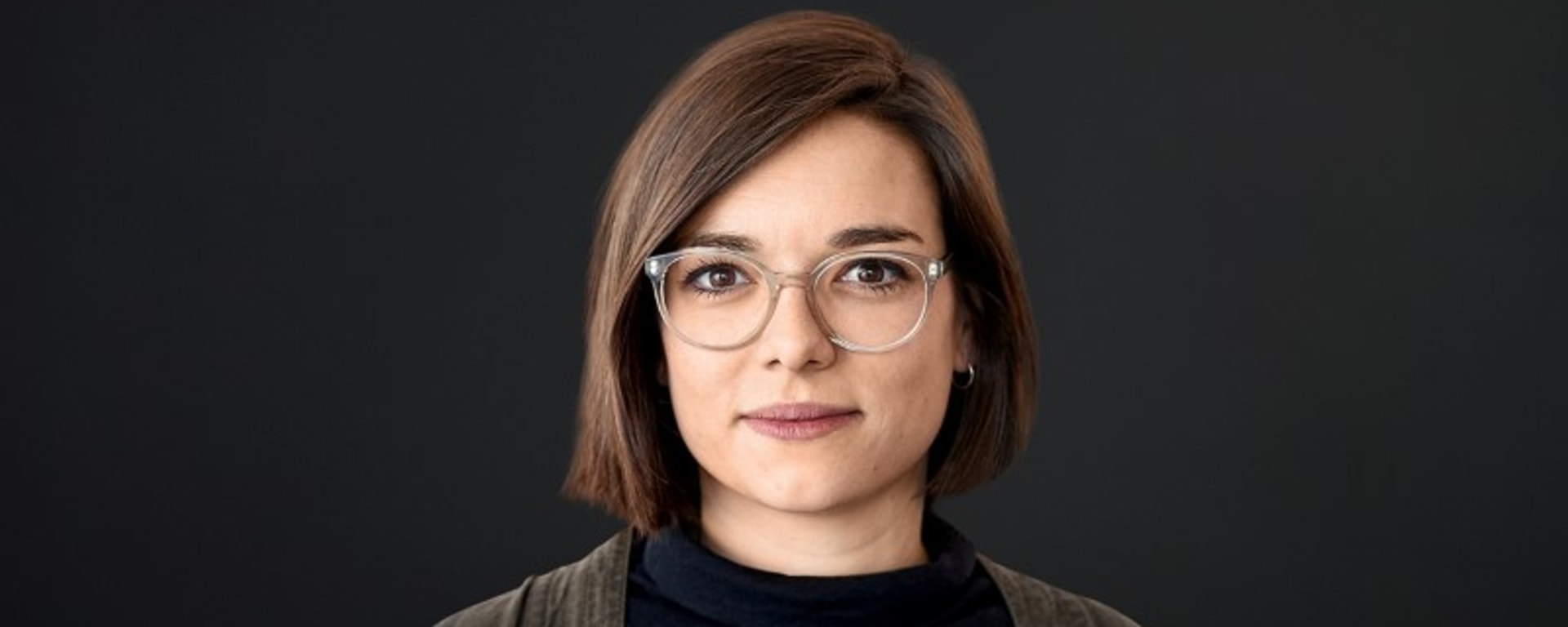When an art collection breaks new ground
Published on 08.09.2020 CEST
A conversation about contemporary photography that awakens, inspires, and provokes - maybe sometimes even a little too much.
Vontobel has been collecting art since the 1970s, and doing so professionally since 2014, when it began focusing on contemporary photography. The magazine Kunst+Architektur in der Schweiz (k+a) paid a visit to the curator of the bank’s collection in Zurich, resulting in this interview about the challenges, benefits and development of a corporate art collection.
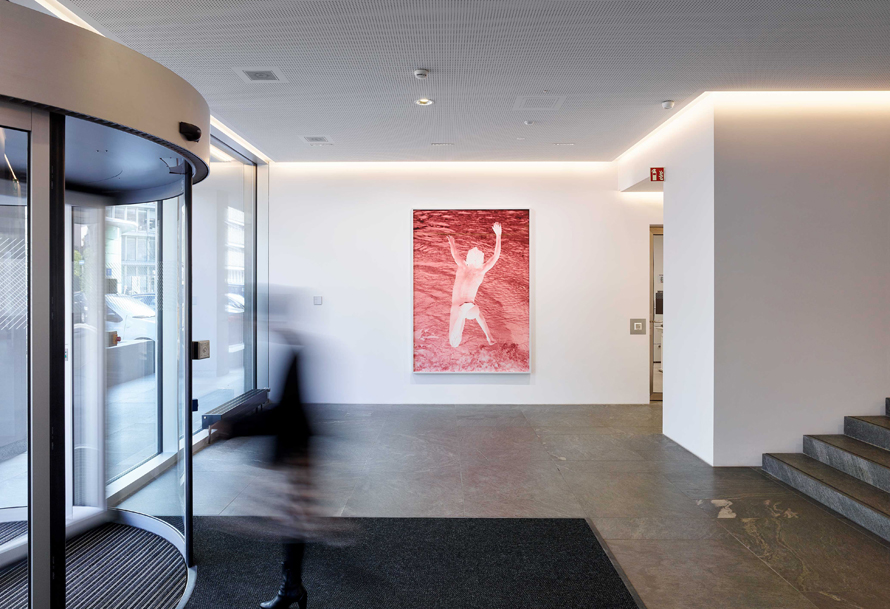
View into the lobby with the art work «X», 2017 by Viviane Sassen. / © the artist / Photo: Dirk Weiss
This interview was conducted by k+a editor Stephanie Ehrsam. It was originally published in German in issue 2020.1: Collections and Collectors.
We present it here in English with the kind permission of the publisher.
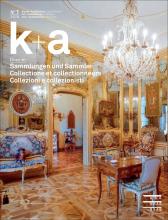
Ms. Baselgia, it was back in the 1970s that the bank’s President Emeritus Dr. Hans Vontobel laid the cornerstone for the Vontobel art collection. What can you tell us about the history of the collection, how it came into being, and the works that it includes?
Dr. Hans Vontobel (1916-2016) was not only a banker, but also an active patron of the arts. It was his personal conviction that a company like Vontobel bears a responsibility to society, and he aimed to make this belief a reality through a number of projects, among them the promotion of culture and the arts. In the 1970s, he established an in-house Art Commission that purchased works of art from galleries or directly from the artists, more or less in line with his own personal preferences. The members of the Art Commission were all laypersons, and in retrospect it is clear that there was no one giving any expert advice. The majority of the collection was made up of paintings and sculptures by Swiss artists. Except for a few people, for example Not Vital or Wilfrid Moser, not many of these artists are still known today.
From the very beginning, the works were intended for the Vontobel premises – in this way Hans Vontobel wanted to create a lively environment for employees and clients. In the last few years, the collection has been managed more professionally. One of the results of this change is that a number of its works have been sold, in order to consolidate the collection. Today the size of this original collection is now around 200 works.
With this professionalization in 2014, the collection was also realigned around a new focus on contemporary photography. How did that come about?
The new direction of the art collection was mandated by the bank’s Executive Management. Christian Schilz, Head of Corporate Responsibility at Vontobel, was given the task of initiating the process and reactivating the Art Commission. It was clear that if you wanted to realign the collection, you would need to focus its content and also manage it more professionally. So it was decided that from that point on, the collection would concentrate on the medium of photography. The bank succeeded in persuading Urs Stahel, the co-founder and long-time director and curator of the Fotomuseum Winterthur, to serve as an external consultant. Axel Schwarzer, a member of Vontobel’s Executive Management, agreed to chair the newly reconstituted Commission, and shortly afterwards, I was invited to serve as curator of the collection. In the beginning we all had to get to know each other first, so we had a lot of discussions about what expectations the collection should meet, and even how broadly to define “photography” itself.
Where do you stand today? What strategy has evolved over time?
The new collection for contemporary photography already comprises around 170 works. The subject of the collection is "Man and His Doings". We look for photographers, both Swiss and international, whose work reflects man and his influence on our living environment. Having a good mix of artists represented is also important to us. Our collection includes works of both lesser known and internationally known names. However, we’re not playing in the Gursky League.
In which league are you playing, then?
Paul Graham, Viviane Sassen, Zanele Muholi or Richard Mosse are well-known names that are represented in our collection, or to mention some Swiss names: Shirana Shahbazi, Daniele Buetti, or Thomas Flechtner. Of course, I can't talk about the specific budget. The art collection is considered a unit of its own within Vontobel, so the bank’s Executive Management has accorded it a special budget. And it is flexible – with the professionalization of the collection, the budget has also increased, so today we’re able to acquire about 30 new works a year. Around half of these are works by young photographers. Urs Stahel and I make suggestions to the Art Commission, and after intensive discussions, a decision is made together.
In the 1970s and especially starting in the 1980s, corporations, including banks as well, invested in art in a targeted way. Art was an asset, an investment. How does that look today?
The way we collect, I don't think you would call that an “investment”. If you want to build an art collection as an investment today, you really have to bring millions to the table. Or you have to collect very broadly and hope that a few of the artists manage to become “hot properties”. This is absolutely not what we’re aiming to achieve! On the contrary, we are currently in the phase of building up the collections and fine-tuning our strategy, so targeted investment is hardly an issue. But I cannot deny the fact that bankers are interested in how these art works go up or down in price.
Do you track that?
No, it is not really monitored. But sometimes it is an issue in face-to-face discussions: "What do you think, could it double in value in the foreseeable future?"
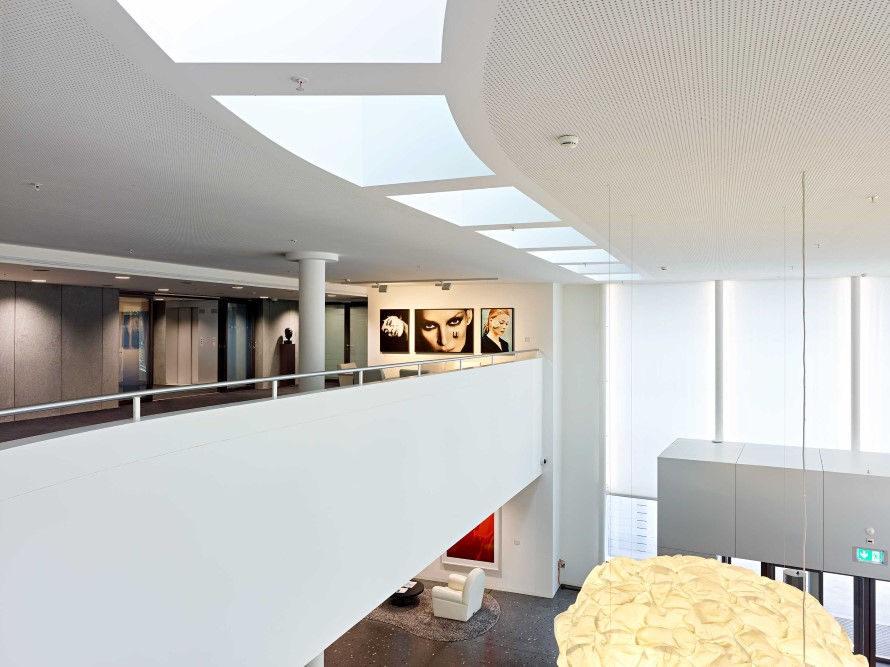
Foyer at the Vontobel headquarters with works from the series Looking for Love (1996/2014) by Daniele Buetti. / © the artist / Photo: Dirk Weiss
Why does Vontobel maintain its own art collection?
I keep hearing that the “corporate art collection” is something very Swiss; that practically every insurance company and many financial institutions here have their own collection. At Vontobel, interest in art is part of our corporate culture. Dr. Hans Vontobel’s attitude in this respect was very formative. Promoting art has simply been part of Vontobel's DNA. The collection is of course also a medium of communication between us and the people who come through our premises. Through the collection, we are always try to absorb new, even unexpected, perspectives on current phenomena. To do this, you have to stay up to date with global events; you need to be forward-looking – and also you have to have courage. These are qualities that Vontobel also cultivates as a company. Our commitment to art is part of our contribution to society, and it demonstrates that Vontobel has its own perspective and opinion.
But the reproach can always be made that a financial institution maintains an art collection or promotes the arts because it needs to compensate for the image problems it has in the public eye.
I agree that a collection – or art in general – should not, and must not, be used for promotional purposes, where it becomes subordinated to commercial considerations and mechanisms. However, that was never an issue for us. But it is also clear that if our collection helps create a positive image of the company, then that is a good thing. At the moment, we do very little to communicate the collection to the outside world. It is certainly not used as any kind of targeted promotional tool to enhance our image. The situation is different, however, with “A New Gaze”, the prize we created for young contemporary photography. Vontobel tries to assume its responsibility to society – not just talk about it. If you have invested a lot in a project – and I don't just mean financially – then you’re happy when the public perceives it in a positive way. The prize is also accompanied by a public exhibition in the lobby and foyer at our headquarters.
Tell me more about this prize, “A New Gaze”.
The title of the project is actually self-explanatory. We seek out photographers with new and unusual perspectives on the world around them. “A New Gaze” takes place every two years and focuses on a different continent each time. Following North America and Africa in the first two editions, it is now Asia’s turn for "A New Gaze 3". At the beginning of the process, we write to around 30 experts from the region, and with their advice we nominate candidates for the prize. We then invite the nominees to submit an idea for a new project related to the theme that we have chosen for that year’s edition. The winner is given one year to work on the project, after which we start planning the exhibition together, and producing and designing the catalog. The prize focuses on young people who, thanks to the 20,000 francs in prize money, are often being given their first chance ever to develop a project from A to Z. The winner of “A New Gaze 3” is from South Korea, who is not yet thirty years old. He started working on his project on the theme “Responsibility in the Age of the Anthropocene” in early January. The exhibition will take place in the spring of 2021.
When it comes to young artists who haven’t exhibited much before, it’s difficult to foresee how the final results will turn out. Isn’t Vontobel taking on some risk with this prize?
Yes, that is true. We are always jumping into the water at the deep end. With the previous year's winner, Kelvin Haizel, we had some problems with the quality of the image data, for example – he required some really high-quality printers. In the end, the entire exhibition project was produced in Zurich because it wasn’t possible in Accra (Ghana), where Kelvin is based. This meant that Urs Stahel and I suddenly found ourselves in the role of studio assistants. But at the end of the day, the exhibition was great and the artist was happy. It's always hugely rewarding.
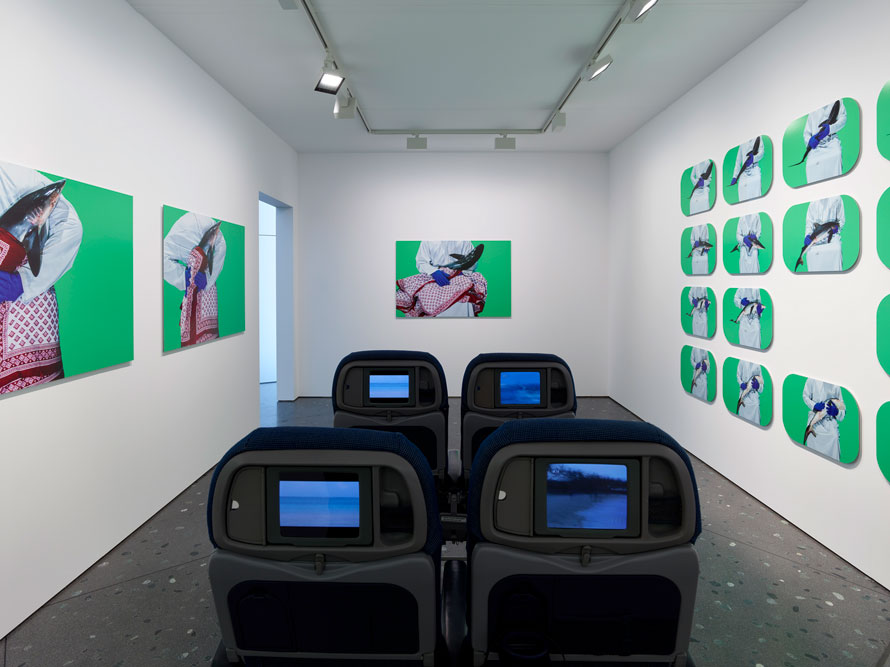
Installation view: Kelvin Haizel, “Basic I&II” and “BirdCall 961 Appendix B”, Vontobel Zurich, 2019 / © the artist / Photo: Benedikt Redmann
Do you also sustainably support these young artists, for example by following their careers after the prize year, and buying their works in an organized way?
Some of the exhibited works featured in “A New Gaze” actually do go into the bank’s collection – four to six works of each artist. We have also bought additional works from the previous two winners. The rest belong to the artists. I sincerely want to support the artists for as long as possible. I not only follow their careers, but also try to arrange for their work to be loaned out from the Vontobel Collection. One day we may even be able to organize a traveling exhibition of the winners’ work. For example, part of Kelvin Haizel's work was shown at the LagosPhoto photo festival in Nigeria.
Coming back to the collection – what special challenges exist in looking after a corporate art collection?
The biggest challenge is surely that as a curator, you are not as free as a curator working in a museum. As soon as politics or religion or nudity becomes an issue, we have to think carefully about what can – and can’t – be displayed. I always dare to walk the tightrope and try to test where the boundaries are. But in the bank, it’s clear that no art works that are too provocative can be hung in the rooms where clients are received. That said, I think that for a financial institution, our collection is often quite courageous, and it does drift out of the comfort zone of certain viewers. I know that’s true when I hear comments like, "You can't do that!"
What works have triggered reactions like that?
A good example would be a work by Viviane Sassen with the title “X”. Placing the work was already a challenge because it is very large and heavy. It is hanging now in the entrance area of our offices at Genferstrasse 27, where it caused a bit of a brouhaha. In this image, there is a young person, naked, whom we see from behind jumping into the water from an embankment. The reaction to it was often just a reflex: "A naked young person – in a bank – you can't show that these days!" To which I answer: "Let's take a closer look at the image first." In this case, the work has already undergone a high degree of abstraction. It is a negative that has been colorized in monochrome. The person in the image has no identity at all – gender, age, even skin color are all ambiguous. And that's exactly what Sassen is all about! Conversations like these keep showing me how important it is to communicate art.
The works belonging to the Vontobel collection are hanging in lobbies, conference rooms, private dining rooms and even in the employee cafeteria. What role does architecture play in the way you’re able to stage these works?
When we buy a work, we normally don't know already where we will end up placing it. Only afterwards do I think about where it could go. In this regard, we do have to take a backseat to the built architecture. I don’t always like that, as a curator, so I often have to think about how I can improve an unfavorable situation with “quick wins”. In the Uto staff restaurant, for example, we recently had a situation that illustrates the exact opposite: there were two walls there where we wanted to place something. For the longer of the two walls, offering eight meters to work with, I specifically contacted Anne Morgenstern. The series of photographs that we selected together from her portfolio was then tailored to the dimensions of the wall, and the wall itself was painted with a color that suited the display. So it turned out that the work was exhibited in a very site-specific manner, but that doesn’t mean it is forever bound to this specific location. It is hardly possible to exhibit any works as fixed installations. For one thing, the buildings don’t belong to us, and for another, the company is in a constant state of change, meaning that spaces are continuously being eliminated or transformed. So when we hang art works, we have to be sensitive to this fact of life.
How do you assure museum standards in the bank’s buildings, for example in terms of security or conservation?
This is an important issue and yes, it is a big challenge for us. I try to insist on minimum standards in art handling. For example, images may only be moved with gloves and only in my presence. And of course I work with professionals when it comes to transporting any works. For the most part, though, the purpose of our collection is to exhibit the works on our premises, and unfortunately that means that they do sometimes hang on walls where they are exposed to sunlight or fluctuations in humidity. I use so-called museum glass with UV protection and regularly check the works. But there is not much more I can do than that.
What are your goals for the next few years?
First of all, I would like to systematize the existing collection, so that we have, for example, a mediation text for each work. In a next step I would like to open the collection further and make it more accessible to the public. For the moment, this is only possible as part of guided tours on request. But basically, our goal is to build up an interesting and relevant collection for contemporary photography. A collection that is multi-faceted and reflects different perspectives without losing sight of the critical view.
What is it for you personally that makes collecting so magical?
For me, the magic of collecting is to immerse myself in the different ways that artists think, see and work, and to have the chance to stand in front of a work again and again and think: That is simply wonderful!
Read the original version:
About the Society for the History of Swiss Art and their publication Kunst+Architektur in der Schweiz (k+a)
The Society for the History of Swiss Art SHSA, founded in 1880, is a non-profit organisation. Its main objective is to secure the future of our national architectural heritage by increasing awareness and informing each generation and strata of society in a reliable and future-oriented, manner, tailored to their respective needs. The SHSA offers a wide range of traditional printed matter as well as innovative digital products designed for educational and training purposes and the transfer of knowledge, which in their own way all promote cultural participation under changing conditions.
Kunst bei Vontobel
The art collection and prize have been part of the department “Art at Vontobel” since 2015 – a cultural commitment that is a vital element of the bank’s Corporate Responsibility. In addition to setting up, managing and mediating the collection, we have been managing “A New Gaze”, the prize for young contemporary photography, every two years since 2017.
The Vontobel Art Commission, as a body made up of employees from each of the Business Areas, advises on matters of strategy and acquisitions. President of the Commission is Axel Schwarzer (Head Asset Management), and leading its day-to-day work is Christian Schilz (Head Corporate Responsibility). The art historian Luisa Baselgia is responsible for the department’s practical management. Acting as a consultant, the highly respected Zurich-based expert on photography and exhibition organizer Urs Stahel (co-founder and former director of the Fotomuseum Winterthur, 1993-2013) influences the collection and projects.
Published on 08.09.2020 CEST
